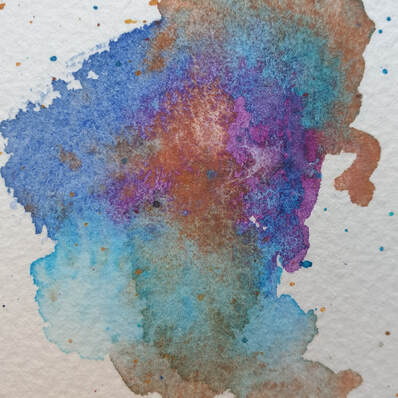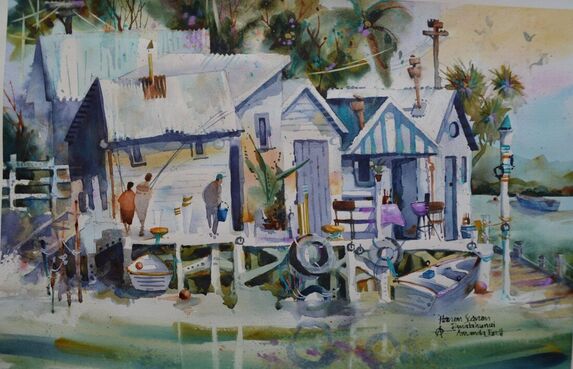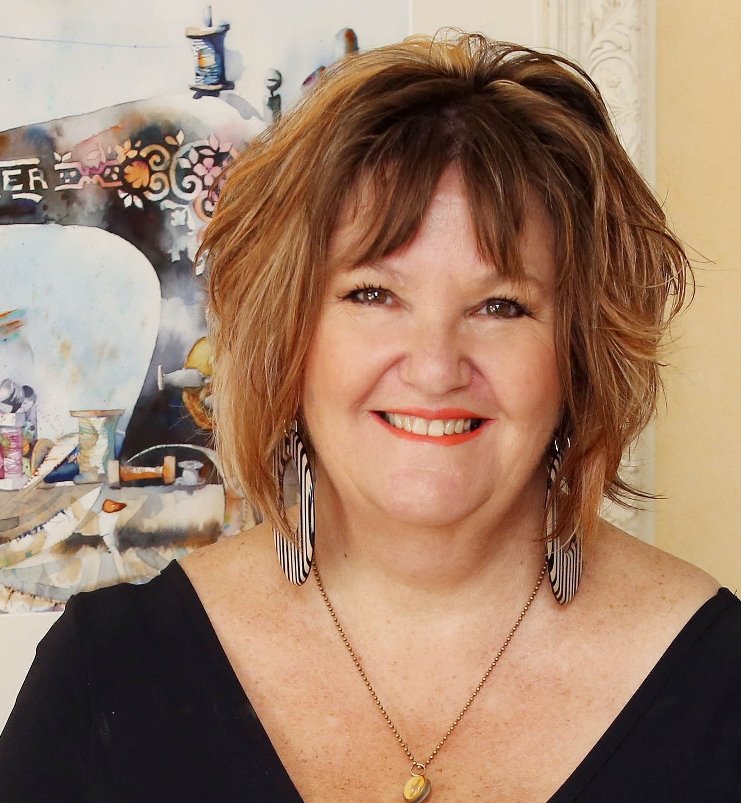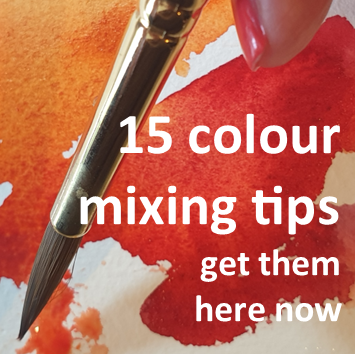
KM says …
Mixing pigments! Trying to learn off You tube as best I can. Also paying for a few zoom sessions. No one mentions pigment numbers. I hear a name, but different brands use different pigments and different names and granulation varies for same pigment but different brand! I've mixed a lot of Mud from not paying attention to the number of pigments. I have a mostly transparent palette. I know, I know. Learn by doing and learn from experience. Love your positivity! Have a great time in Italy. Cheers KM The problem with pigment numbers is that every manufacturer has their own recipe for a colour starting with a particular pigment, numbered and annotated on the colour label. And that’s pretty much where it ends! Each manufacturer’s recipe will include other processes (eg kiln firing) and other additives and binders that, in varying quantities change the appearance of the colour name, making each a unique blend resulting in a unique colour. For example Transparent Orange is the same pigment as Light Red but light red undergoes kiln firing which alters it’s characteristics to create a different colour, level of opacity, granulation etc etc. somewhat similar to Winsor Blue red and green shades. Sometimes a pigment number can help you find a hue in another brand – one of my favourite painters uses a different brand to me, I love her colours – what’s more, I managed to find them using the pigments numbers cited by the manufacturer. This was a lucky find as I discovered I had the correct colours already in my favourite brand – they’re close enough given different computer monitor settings etc. There is much discussion about only using “single” pigment colours. This is really a misdirection … I regularly use 6, 7 and 8 colours to achieve the value and temperature my painting needs. I also regularly use a brand known for combining 3-4 pigments – I’ve never had a problem mixing their colours. This leads us to colours labelled as “hue”. In other words, a combination of pigments to achieve the colour of a particular pigment, eg Cobalt blue hue. The characteristics may differ ever so slightly from the genuine pigment, I assume this is to keep prices down for very expensive pigments eg cobalts, or reduce reliance on increasingly rare pigments eg quinacridone gold. Focus on irrelevant elements just take us away from painting and feeds our fear with details that may or may not impact our painting - we just need get on with it!! non ferma cari amici!!
0 Comments
 Harum Scarum, WNZ demo painting July 2021. 5th painting in my Pauatahanui series Harum Scarum, WNZ demo painting July 2021. 5th painting in my Pauatahanui series
My workshops on how to generate design ideas came about because a student said they were not ever able to get a “good” photograph of the scene.
I worked very hard on the design of “pauatahanui” and the ensuing series because it’s a popular scene to paint. So how could I make mine different? I got all excited and had to see these boat sheds for myself (aka ROAD TRIP!!). It took 6 months to create a design concept I was happy with. So the subject of this workshop became how to design a painting and not be reliant on good photos because good photos are rare and don't miraculously turn up when required! Somewhat akin to how to paint from a bad photo. Another thought, it doesn't take courage to paint what you see - it does take courage to paint what you think and feel. I often turn away from my reference, it was pointed out to me some years ago that I rarely “look” at my subject. Through my study and observation I begin a path of understanding. I take reference photos, I create thumbnail studies which lead me to my design idea - I want my work to be unique, I want the essence of the subject, I want it to be from me. So, how to be less reliant on photos? it's all about getting an idea. one thing I must say to you is that, generating ideas is not easy, like everything it takes consistent and frequent effort. My typical practice revolves around drawing/designing (en plein air or in my studio) a thumbnail and doodling some of the shapes I think I will want. What do I like or not like? Leave out, add in, bring something relevant in from another scene. This is where I get to know my subject and the relationships of the other elements to each other. I have sketched/painted many boat yard scenes so I feel confident about bringing ideas in from previous study. And that's what this is about - study and observation. Even though I have no intention of creating a photographic realism painting, I need to understand shapes, light and dark, perspective, values etc to create a work based on simplified shapes. what could i do that was different/better? Firstly, I have the power of watercolour's fluidity; secondly, a unique composition. So the idea became the jumble and chaos of boatsheds and the ensuing detritus. ciao Amanda
I know many creatives and many of them never finish a work. The same work is done and re-done and done again because it’s never right. There’s always something out of place, a comma, an invisible brush mark, a chord that seems not right – not perfect = imperfect! We do it again and hope it will be better next time.
And so now, this work gets put aside in the hope (read dread) the next one will be better. What people don’t realise is, there’s no such thing as mistakes. What happens is, we get a different result from what we expect, we don’t know what to do with it. This is often the result with watercolour, we have a vision and an eye on our goal – but something happens or we return from a cup of tea to find our painting looks different from just 10 minutes ago. We’ve become so results driven we’re forgotten to enjoy the process, play to our medium’s strengths and just have fun playing with the paint. Don’t get me wrong, I’m not saying don’t attempt specific subjects, what I’m saying is have fun along the way. Explore your paint and ask yourself “What would happen if …?” or tell yourself “I’m just going to have a play with this and see what happens!” - my favourite way to start new work! It banishes fears and performance anxiety and sets up an easier happy attitude!! happy painting dear friends!! Amanda |
AuthorPaintBox Tips, secrets, random thoughts, Poetry in watercolour is made in the freedom of the here and now. Amanda Brett Inspiration exists, but it has to find you working - Pablo Picasso There are no mistakes in watercolour, just some extra surprises!! Categories
All
What my readers and viewers have to say
Your emails are so informative! I must confess I've watched a couple of your demos from beginning to end, and it makes me want to watercolor!!! I've only ever painted with oil or acrylics and haven't know how to begin with WC. Your content is excellent!
Susan VN Hi Amanda
Thank you for your tips. They inspired me to practise and I realised I haven’t been loading the brush properly. I learnt about adding more paint, and not water, to washes. In today’s tips I like the idea of painting with purpose. Your tips are very helpful. I very much appreciate receiving them. Elizabeth Hi Amanda I enjoyed your post and generous tips. Looked up Dan Burt I begin to see that you can colour any subject to give it pizazz so long as the tone and form is correct Certainly adding value now to my attempts Thanks heaps Annie
Yes very wise words. Agree with not fussing and agree with comments about good quality paint. Well written and inspirational as always. Cheers Janet xxxx Archives
July 2023
Copyright © 2022 All images and text on Amanda's blog and website are the the legal property of Amanda Brett and may not be reproduced without express permission from Amanda Brett or her authorised agent. Thank you for respecting her art and the livelihood of all artists.
|



